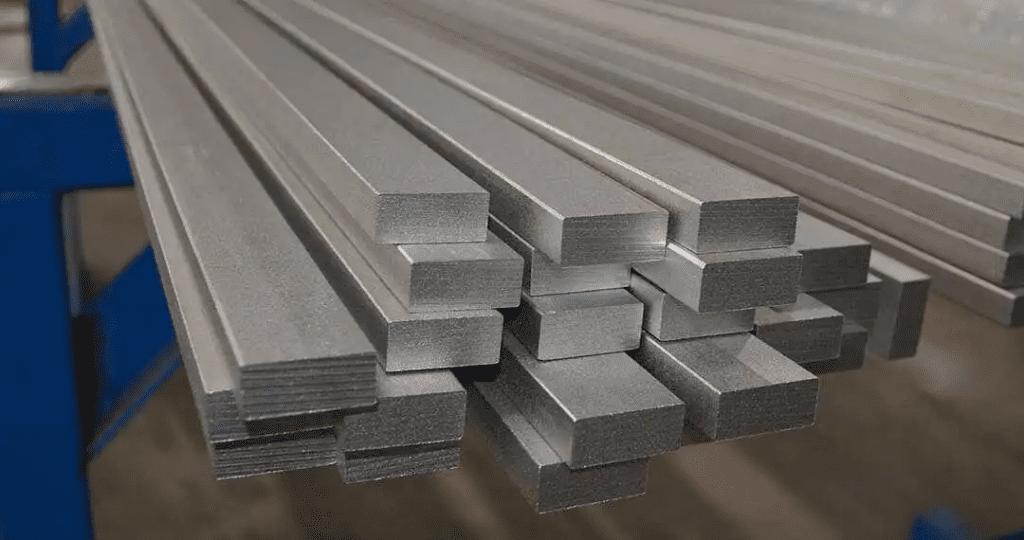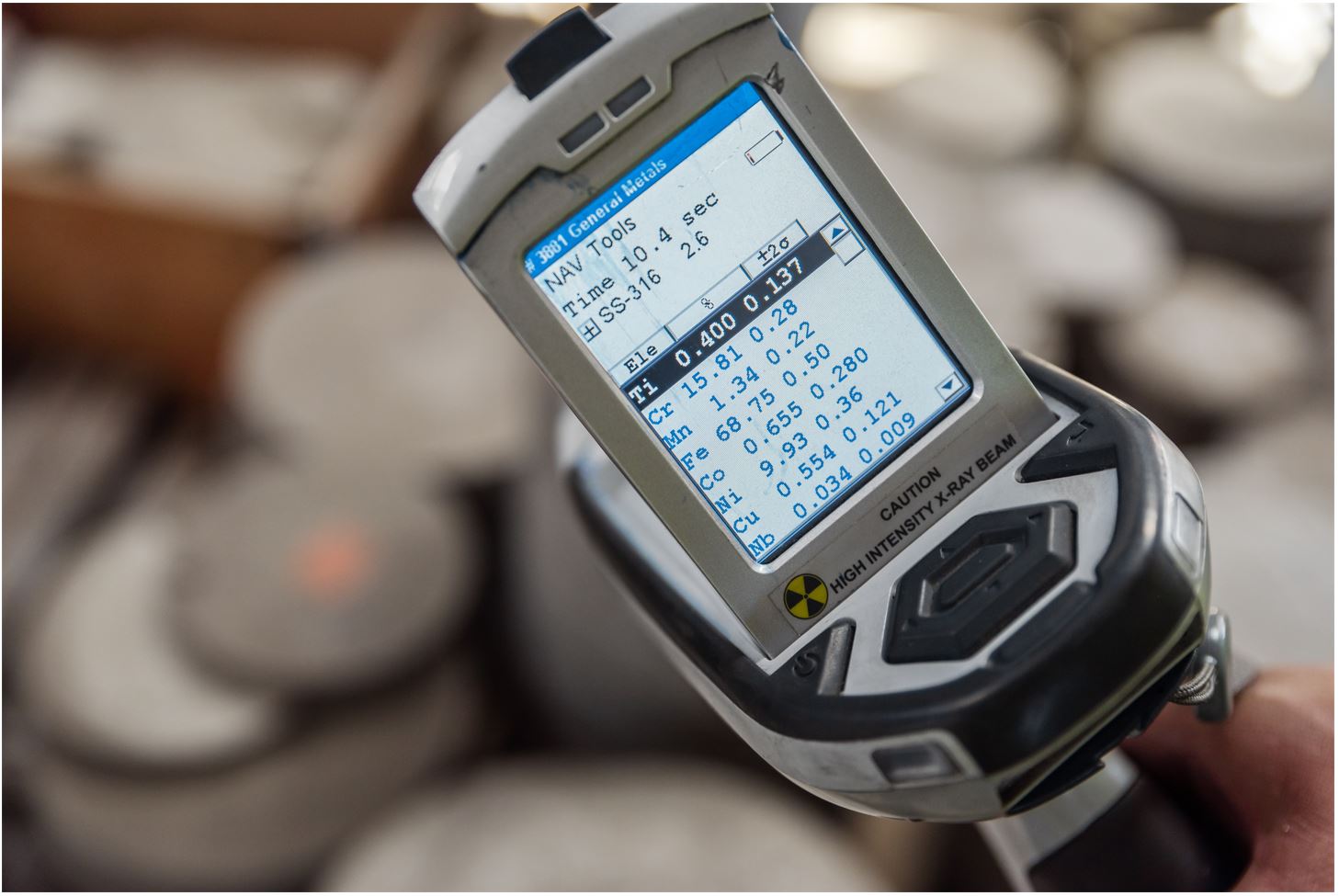Aluminum and steel are the two most commonly used metals in manufacturing. However, despite their different properties and applications, it can be difficult to distinguish between them by appearance alone.
Furthermore, aluminum and stainless steel come in countless different metals and grades, some of which look identical.
Ideally, metals come with some kind of identifying marking or common metal identification feature. However, this is not the case in most scenarios, especially when dealing with a scrap
If you’re unsure how to identify metals and their origin, stick around as we demystify this mystery.
When working with steel, aluminum, cast iron, or any other type of metal, it’s important to know how to tell the difference between them. Depending on the metal, identification methods may be as simple as comparing colors or as complex as conducting an OES Analysis.
However, many metals look virtually identical so it can be hard to get accurate results from sight alone. Fortunately, there are other techniques, such as the magnet test, to determine what material you’re dealing with.
Below, we detail a few simple metal identification methods to help distinguish between steel and aluminum, different grades of aluminum, and other metals such as copper, bronze, and titanium.
How to Tell the Difference Between Steel and Aluminum
Aluminum and stainless steel have significantly different mechanical properties that can be used to differentiate between them. Here are some simple tests for identifying aluminum and steel.
Magnet Test
The easiest method for distinguishing these two metals is by using a magnet. Ferrous materials, like stainless and low carbon steel, are magnetic, while most non ferrous metals are non magnetic.
To conduct this magnet test, simply press a magnet to the metal—it will stick to stainless steel but not aluminum. Although, it’s important to note that some stainless steels are magnetic, while other metal types are not.
Hardness Test
Aluminum is also a much softer metal than steel, and this property is easy to test if you don’t mind scratching the piece of metal.
Press a key into a piece of unknown metal that may be aluminum or steel. If the piece is aluminum, it will scratch easily and deeply with light pressure. Steel grades will scratch, but they take much more pressure and won’t be as deep.
This metal identification method gets easier as you practice and get used to how aluminum feels under the key versus how galvanized steel alloys feel.
For a more precise assessment, you can use a Rockwell hardness test. This test measures the hardness of the metal by determining the depth of penetration under a standardized load. Aluminum will typically show a lower Rockwell hardness value compared to steel.
|
Buy Certified High-Quality Metals for Industrial Solutions |
||
|
New Aluminum |
New Steel |
New Stainless Steel |
 |
 |
 |
| Reliable supply: Consistent, certified aluminum stock you can trust. High-quality material: Superior-grade aluminum for precision needs. Custom cuts: Accurate cuts down to thousandths of an inch. |
Durability and strength: Reliable for projects needing long-lasting, tough materials. Cost-effective: Quality steel that offers strength without breaking the bank. Custom cutting: Precise cuts tailored to exact needs with top-tier cutting tools. |
Sustainability: Highly eco-friendly as the most recyclable metal on earth. High durability: Resistant to corrosion and wear, ensuring long-lasting performance. Custom precision cuts: Tailored to your specifications with quick, accurate results. |
How to Identify Different Aluminum Alloys
There are numerous aluminum alloys, each with distinct properties. Some aluminum alloys are easy to weld, while others are not. Certain alloys can undergo heat treatment, whereas others cannot.
Distinguishing aluminum alloys from one another without sophisticated equipment isn’t easy, but there are metal identification methods that can provide some useful information about an alloy.
For example, to determine if a piece of aluminum can be welded, examine its surface finish. A bright and easily polished surface typically indicates that it can be welded, whereas a dull surface suggests it may not be suitable for welding.
Determining the exact alloy requires equipment capable of measuring the material’s composition. This equipment applies energy to a sample and measures the frequencies of the resulting emissions, a process known as OES analysis (Optical Emission Spectroscopy).
The methods used can be either destructive, such as atomic emission spectroscopy, which atomizes or burns the material, or non-destructive, like X-ray fluorescence (XRF) spectroscopy, which energizes the material by scanning it with X-rays.
To accurately identify the aluminum alloy, you will need assistance from a lab or a metal professional with access to these elemental composition identification methods.
Other Scrap Metal Identification Methods
What about identifying ferrous metals other than stainless steel and aluminum? Many metals have distinctive colors that can help with identification. If a metal is bright, shiny, and reddish-brown, it’s most likely either copper or red brass. Copper also forms a pale green patina over time when exposed to the elements—this is the reason for the Statue of Liberty’s color.
Bronze is an alloy of copper and tin, so it has a reddish-brown color very similar to copper. Bronze has a dull gold, darker finish, while copper has a more pinkish-orange color. Bronze is also much more brittle than copper, so if a copper-colored metal is easy to bend, it’s copper.
Gold-colored metals are usually brass. Yellow brass has a similar color to metallic gold, but gold is darker and less yellow. Gold is also heavier and is much rarer, so it’s likely your gold-colored metal is brass.
Keep in mind that metals may be oxidized, coated, or painted, so trying to identify scrap metal based on color can be misleading.
Purchase or Recycle Metals with a Local Metal Supplier
Whether you’re a machine shop owner, a metalworker, or you just need to recycle some scrap metal, Industrial Metal Service can help. We have been supplying steel, aluminum, and other ferrous metals to the San Francisco Bay Area and nationwide for over two decades.
What if you need to recycle scrap metal, but you still don’t know what type it is after trying the metal identification methods above? No problem. We verify scrap metal using x-ray fluorescence technology.
Our handheld Thermo-Fisher XRF analyzers can identify metals and their compositions so we can ensure that you’re getting the alloy and grade you need and you know you’re getting a fair price for your scrap metal.
 Angle
Angle Cast Plate
Cast Plate Diamond Plate
Diamond Plate Flat Bar
Flat Bar Plate
Plate Round Bar
Round Bar Square Bar
Square Bar Square Tubing
Square Tubing Round Tubing
Round Tubing Angle
Angle Channel
Channel Diamond Plate
Diamond Plate I Beam
I Beam Round Bar
Round Bar Sheet
Sheet Square tubing
Square tubing Round Tubing
Round Tubing Rectangular Tubing
Rectangular Tubing Plate
Plate Rectangular Bar
Rectangular Bar Rectangular Tubing
Rectangular Tubing Round Bar
Round Bar Sheet
Sheet Square Bar
Square Bar Square Tubing
Square Tubing
